To make your garden a real natural pharmacy at your fingertips, here are 15 medicinal plants to plant to treat everyday ailments. Varieties whose virtues have long been recognized and which allow you to treat yourself naturally, all year long.
Cultivated for their benefits since the Middle Ages, sometimes even antiquity for some, medicinal plants are present in large numbers. More than 28,000 varieties have been counted in the world, by the Botanical Research Center of Kew Gardens, in London. We have selected 15 of them, to allow you to set up your own medicinal plant garden. Plants that can also be grown in squares, or even planters. You will just have to make sure that preserve humidity in pots and plantersthis type of plantation being more prone to drying out than those in open ground.
What medicinal plants should you plant in your garden to heal yourself naturally?
1 – Lemon balm
Lemon balm is a perennial plant that can be confused with verbena because of its lemony scent. This medicinal plant is particularly recognized for its relaxing virtuespromoting sleep and relaxation. It also helps relieve stomach aches related to anxiety. To use it, infuse its fresh leaves for about ten minutes in boiling water. Allow about 10 grams of lemon balm leaves for 200 ml of water.
2 – Thyme
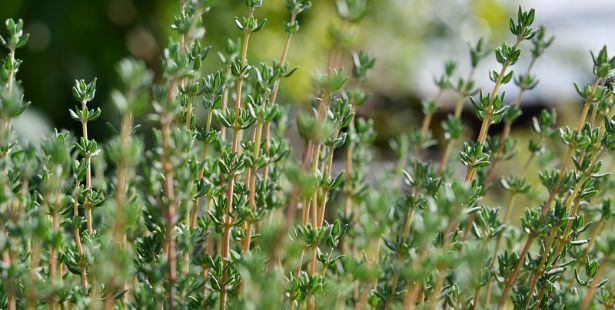
To grow, thyme especially needs sun! This aromatic plant, which thrives in any type of soil, as long as there is plenty of sunshine, allows you to fight against yeast, fungi and bacteria. To use it, place the equivalent of two teaspoons in a cup of boiling water, then let it infuse for 3 to 4 minutes, no more than 5 minutes to avoid bitterness. Tip: add a little honey to your thyme infusion. Thyme is also appreciated in the bathroom, for natural beauty!
3 – Rosemary
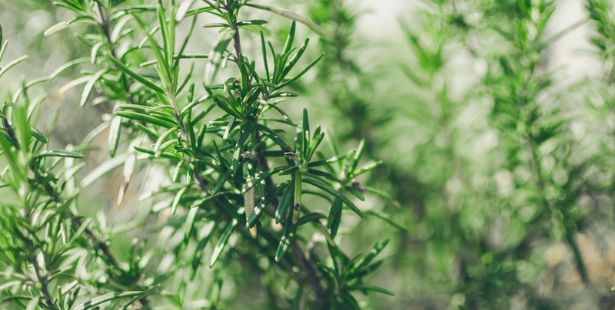
This aromatic herb, which does not require much water to grow, thrives in well-drained soil and in the sun or partial shade. In addition to its fragrant power in cooking, rosemary has interesting antibacterial properties. It also helps to stimulate blood circulation and can be used as a natural antidepressant for mild depression. It is always advisable to consult a doctor before starting a natural treatment for depression or anxiety disorders.
4 – Chamomile
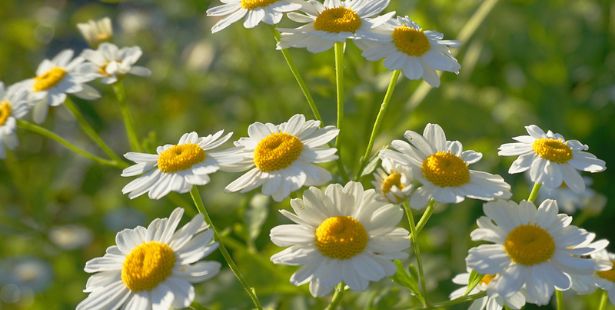
There are several varieties of chamomile: Roman chamomile or Chamaemelum nobile, a perennial plant, or German chamomile or Matricaria recutita, an annual plant considered more effective in medicinal use. These two varieties of chamomile allow fight against dental irritations, but also against insomnia. They also have a beneficial effect on digestion and the nervous system. Dry the flowers, then consume them as an infusion, at a rate of one tablespoon per 225 ml of boiling water.
5 – Verbena officinalis
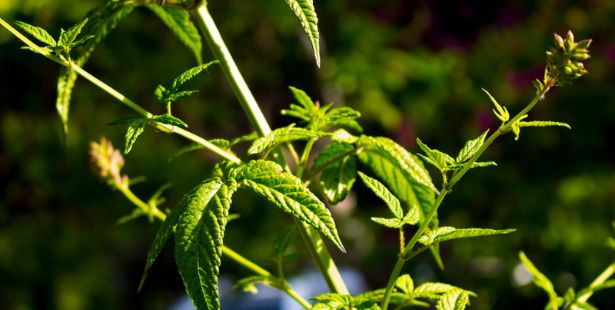
Another popular medicinal plant: Verbena officinaliswhich is more resistant to cold than lemon verbena. Verbena officinalis thus acts as a natural aspirin, when used as an infusion at a rate of 1.5 grams of cut verbena per cup. Let it infuse for between 5 and 10 minutes to enjoy its digestive propertiesbut also treat inflammation or even promote appetite.
6 – Lavender
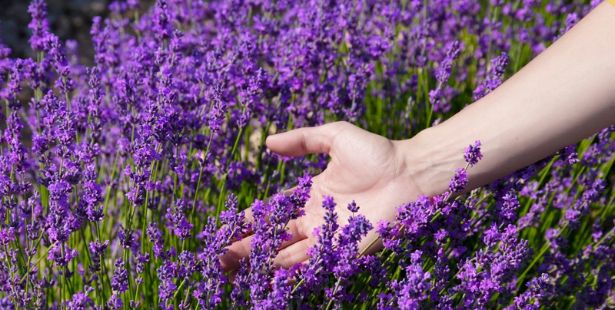
Did you know that lavender can be used as a medicinal plant? This Mediterranean plant that perfumes gardens during the summer months is still resistant to cold. Used externally in the form of a preparation based on essential oils, it is interesting for its healing and antiseptic properties. Lavender can also be consumed as a herbal tea, to soothe nervousness and aid digestion. Lavender essential oil can also relieve sunburn.
7 – Calendula

This medicinal plant, recognizable by its bright colors, repairs skin lesions and aids digestion. Calendula, also appreciated for its anti-inflammatory propertiesalso helps relieve irritation. To benefit from its virtues, you can consume its fresh flowers by incorporating its petals into your salads, or infuse its dried flowers. Calendula thrives in the sun or partial shade, in well-drained soil. Calendula oil can also soothe sunburn.
8 – Mint
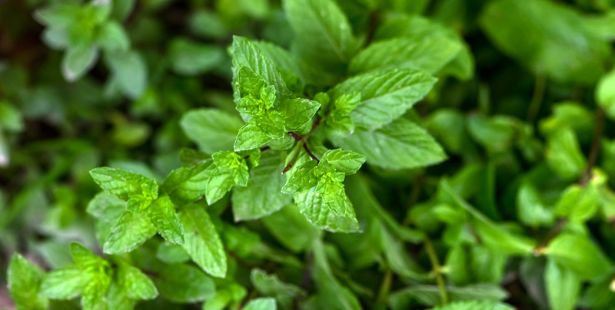
Mint, a refreshing perennial plant in summer, has toning, but also digestive and antispasmodic virtuesMint, whose leaves can be eaten dried or the leafy stems eaten fresh, also has cholagogue and carminative effects, namely that it facilitates the evacuation of bile and stimulates the intestine.
9 – Comfrey
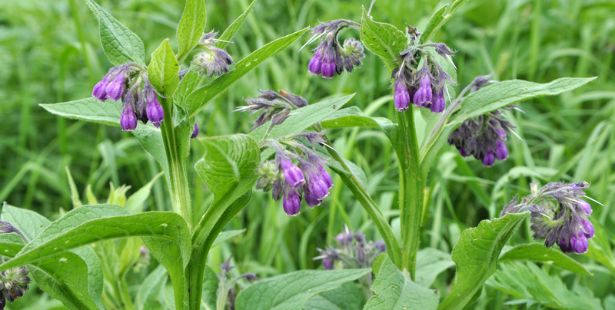
Comfrey is a medicinal plant whose infusions treat diarrhea and other digestive disorders. Its leaves also help relieve cramps or pain related to osteoarthritis. Comfrey is known to promote muscle relaxation. Its roots can also be used to soothe the pain of sprains and strains, but also to heal wounds. The comfrey roots must then be macerated in a fatty substance before applying it. You can also, to fertilize your plants, make comfrey manure.
10 – Echinacea
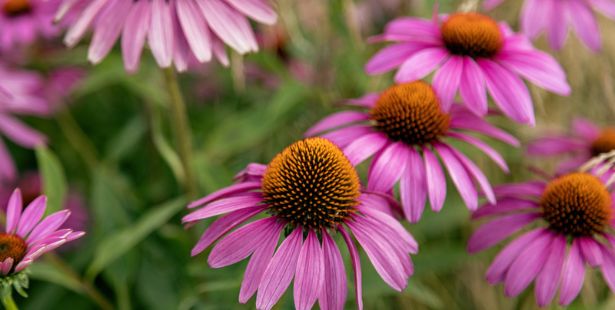
This perennial plant offers a superb colorful clump to gardeners! In addition to its colors, Echinacea is valued for its antibacterial properties. The roots of this plant also help to strengthen the immune system, fight colds and lower mild fevers. It is then necessary to harvest its roots after two or three years of cultivation and after dividing the plants. The roots are consumed dried in infusion, at a rate of one to six cups per day.
11 – The red vine
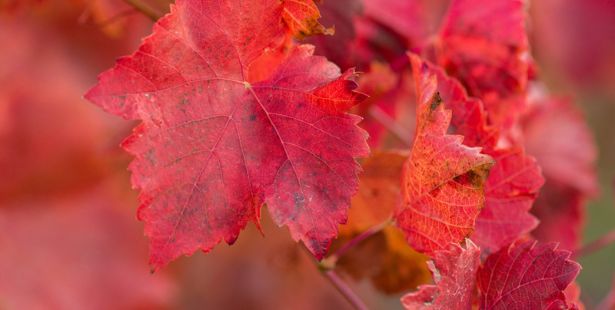
The red vine, which produces grapes, also has leaves that can be used in infusion once dried. Drinking Virginia creeper infusions is particularly recommended for relieving heavy legs.
12 – St. John’s Wort
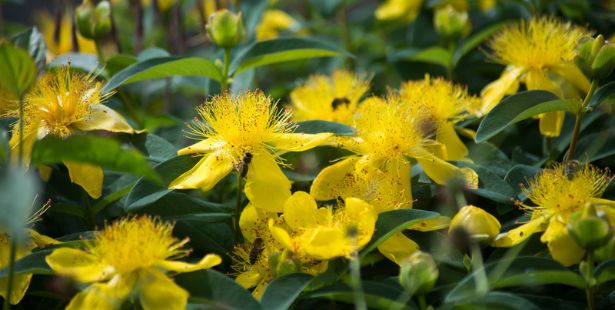
St. John’s wort is known to help treat anxiety and psychosomatic disorders, as well as mild depression. This perennial plant that appreciates sunny areas also has antiseptic and antiviral properties. In external application, it is also recognized as being analgesic, antiseptic and anti-inflammatory. St. John’s wort can also be consumed as an infusion.
It is best to consult your doctor before using St. John’s wort to treat mild depression or anxiety disorders. Note that St. John’s wort may interfere with hormonal birth controlmaking it less effective.
13 – The calluna
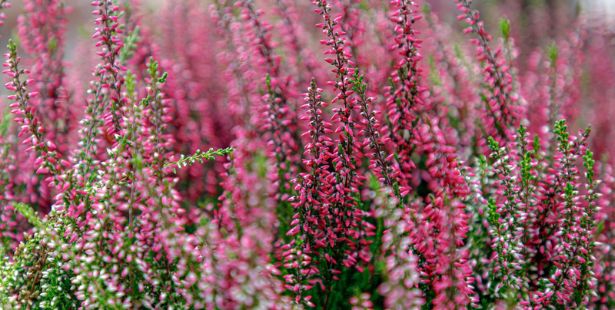
Heather is a heather whose flowering stems can be used in infusion, once dried. Drink a heather infusion helps to cleanse the urinary tract. Heather flowers in August and September and thrives in non-calcareous sandy soil or in rocky areas. Its foliage is persistent.
14 – Wild mallow
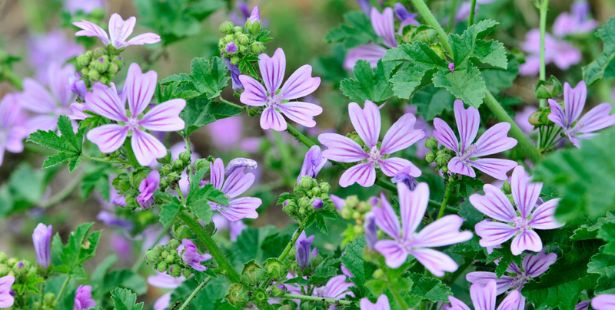
Wild mallow, appreciated by gardeners for creating pretty, colorful beds, should be planted in well-drained soil. Its purple flowers are consumed as an infusion.especially to soothe the bronchi. Tip: to allow the wild mallow to flower all summer, remember to pinch its stems.
15 – Betony
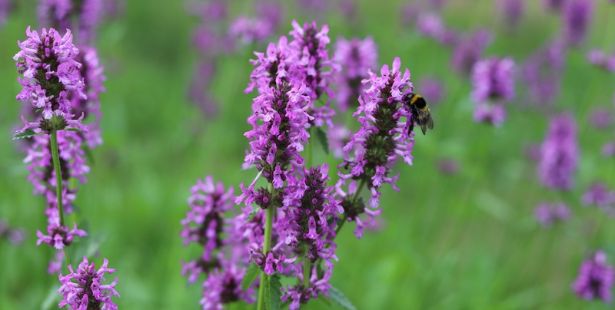
The leaves of the betony can be used in infusion, as can its roots. Drink an infusion of betony helps relieve migraines, but also coughs and mild fevers. It is a perennial plant that is easy to grow and whose seeds re-seed naturally.
consoGlobe also recommends…
Source: www.consoglobe.com


